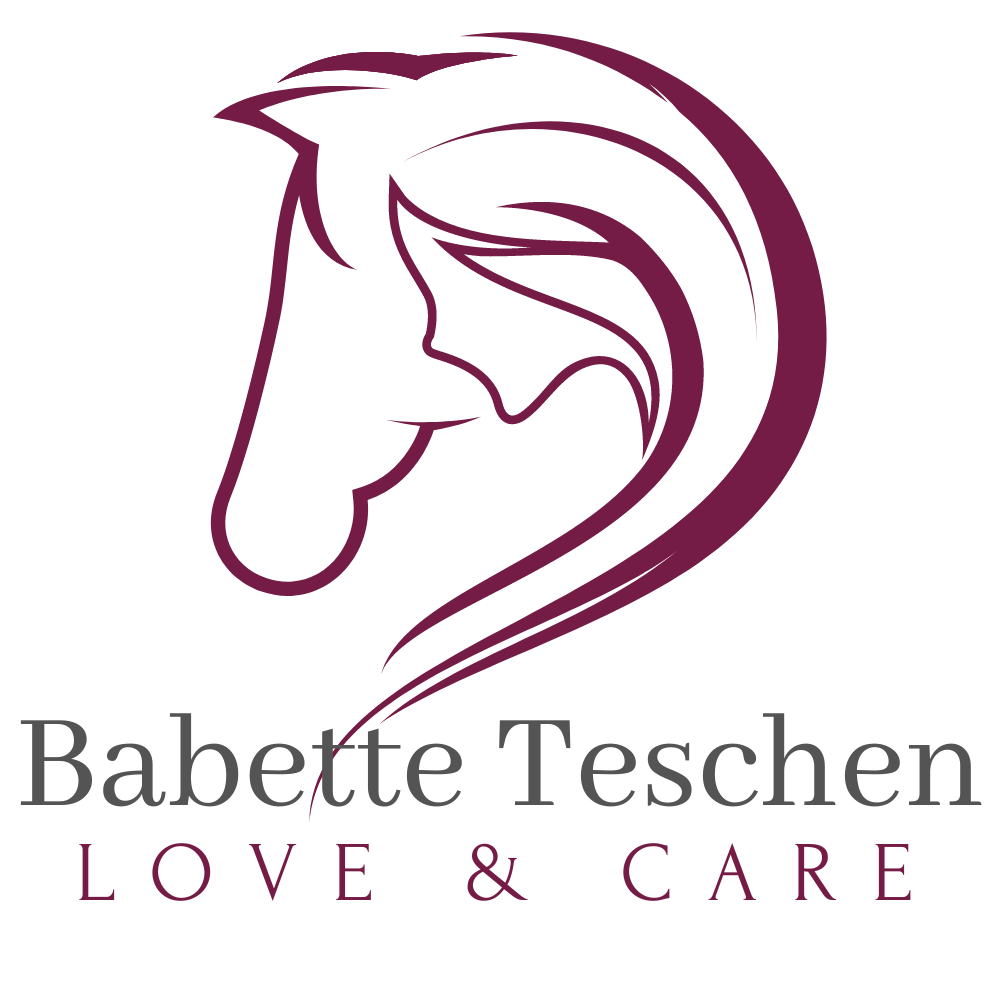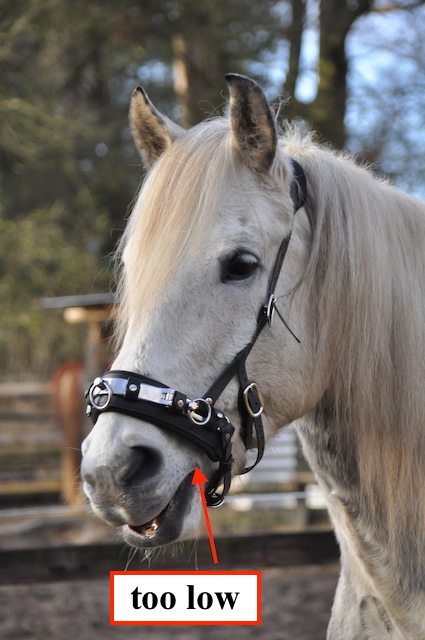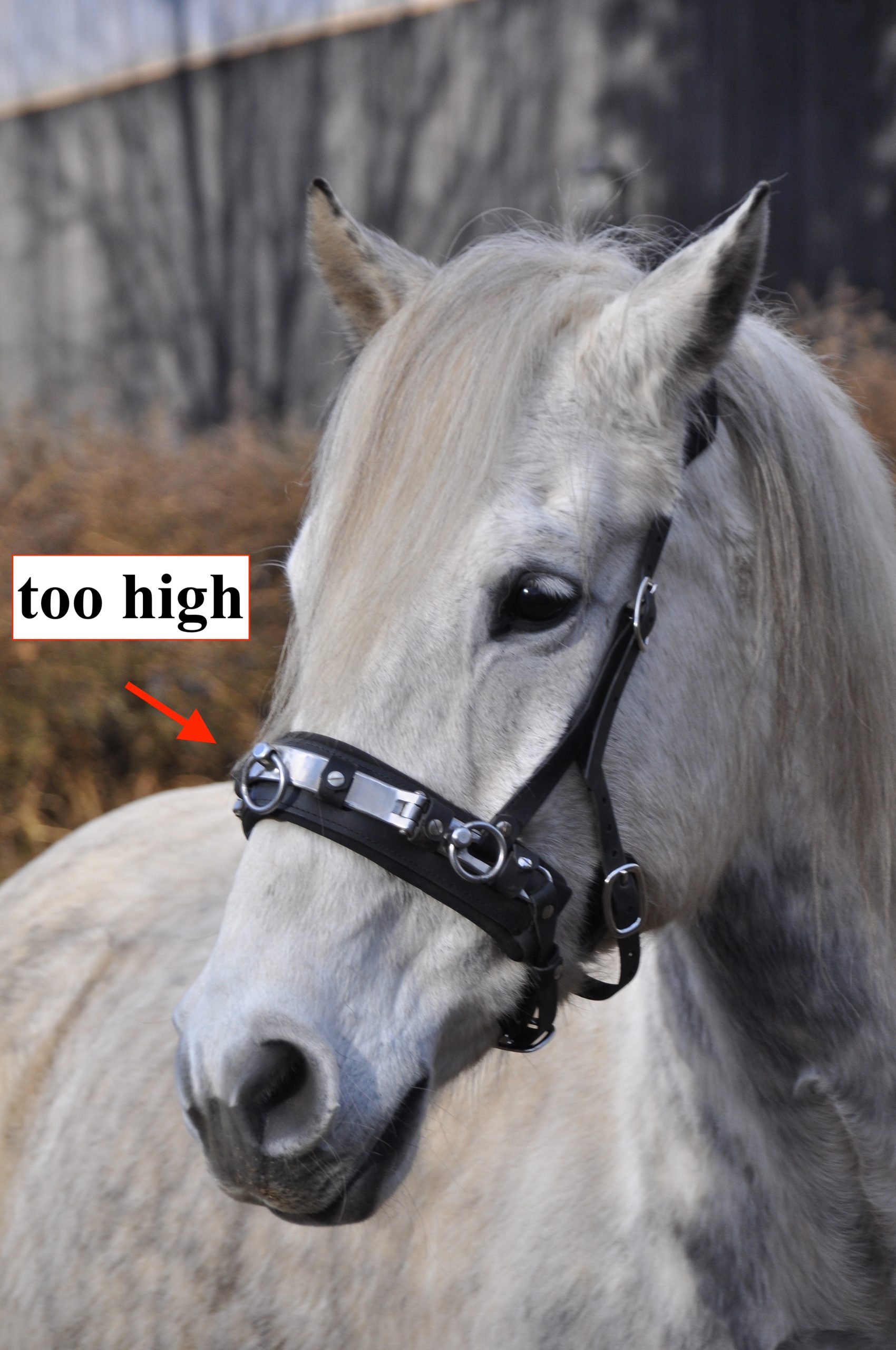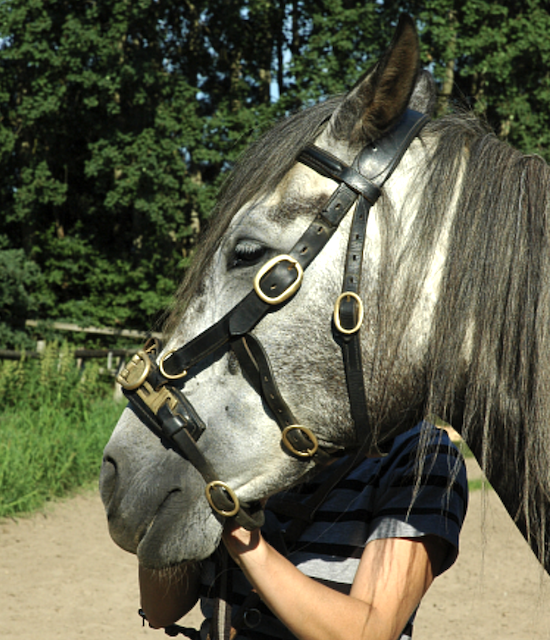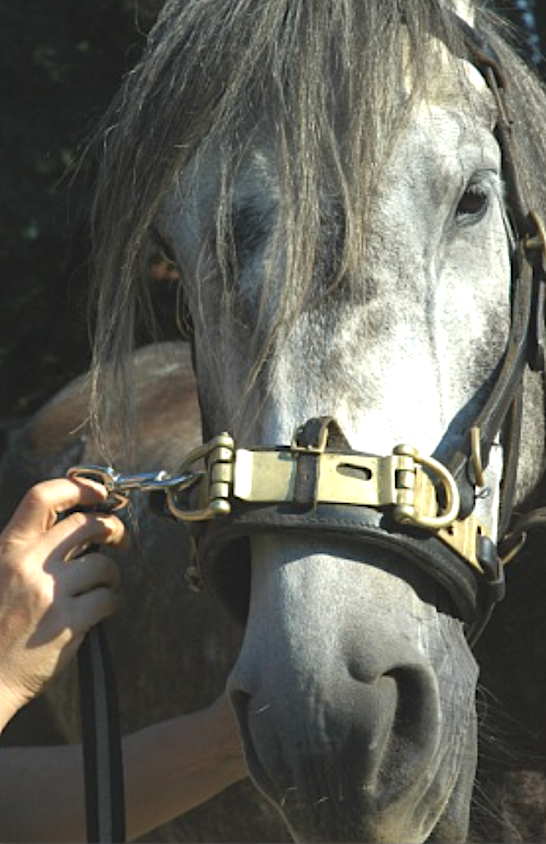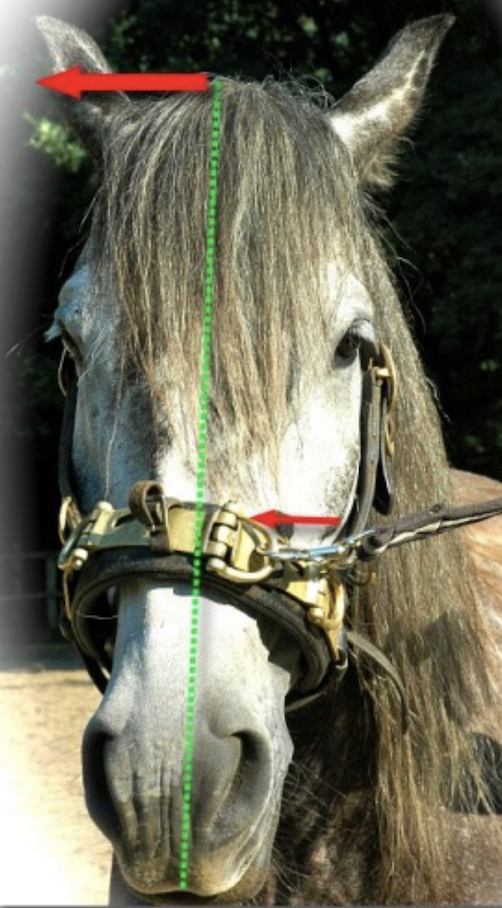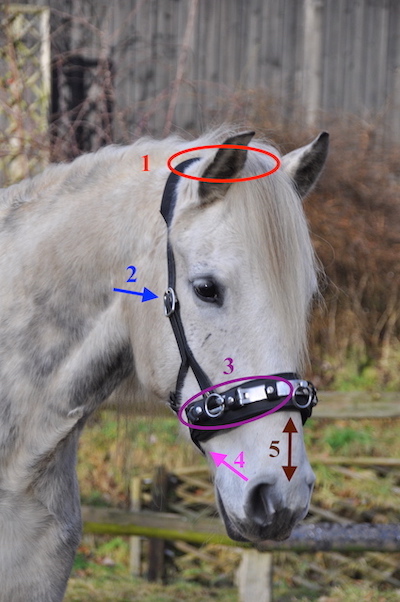How to fit a cavesson correctly?
In my article „Why use a cavesson at all“ I explain why I recommend using a cavesson for lunging.
Put the cavesson on the horse and adjust first for correct length. The nose piece should sit about 1 to 3 fingers’ width below the cheek bone. This is line A in green in the photo below. There still should be about 4 fingers’ width between the nose piece and the upper rim of the nostrils. This is the blue line B in the photo.
Place the cavesson in the correct position
If you place the cavesson too low, the nose piece will press on the soft nose cartilage. The nose is even more sensitive there and you also risk hindering the horse’s breathing. In this photo the cavesson sits too low.
If you place the cavesson too high, it sits too close to the cheek bones and will press onto the areas where the facial nerves emerge. The cavesson in this photo sits too high.
Please, always make sure that the cavesson does not press on the base of the ears. We want to avoid putting pressure on the many acupuncture points in this area. If they are irritated, the horse may react by becoming tense in the back. It also may suffer pain from this hard edge on the sensitive base of the ears.
Keep the eyes safe!
Please, close the jowl strap before you adjust the nose piece. If you close the nose piece first, you may cause too much pressure on the poll. The jowl strap is very important, because it keeps the cheek pieces from sliding into the eyes. It must be adjusted tightly to keep this from happening. Always check after the final adjustment whether you can move the cavesson around. If the cheek piece gets into the eye, you risk your horse’s health. It is certainly very unpleasant when the cheek pieces even get close to the eye. You cannot see the outside cheek piece while lunging – take special care and control the fit once more. The photo shows how the cheek pieces can get close to the eye.
The cheek pieces should be constructed in one piece. Some cavessons have a ring built in to attach the jowl strap. These cavessons are often not stable
After you close the jowl strap, adjust the nose piece. It must fit tight enough not to move easily when you pull. If it fits too loose, or does not fit well, the middle ring that attaches to the lunge line will move to the side. The photo shows what this looks like.
If your cavesson has a throatlatch, close it loose enough so you can place a fist between strap and throat. You can take this strap off, too, it has no function.
Here’s a recap of what to watch for:
- The poll is very sensitive. The poll strap must not be too narrow, and it must not cut in. The edge of the poll strap near the base of the ears should be softly padded.
- The cheek strap must not come too close to the eye, so it cannot hurt it even if it slides a little. To avoid this, the cavesson must have a jowl strap.
- The nosepiece should lie smoothly along the sides without gaps or pressure points (they are always a sign of a badly fitting nosepiece). Soft padding is important.
- The buckle that closes the nosepiece sits right on the jawbone. This buckle must be padded in order not to cause pain.
- The distance from the nosepiece to the nostril should be at least the width of a hand. The lower it sits, the harsher it presses onto the very sensitive soft part of the nose cartilage. The horse cannot open its nostrils fully which impedes breathing.
I explain how to gently get your horse used to the cavesson in the next part of this article.
